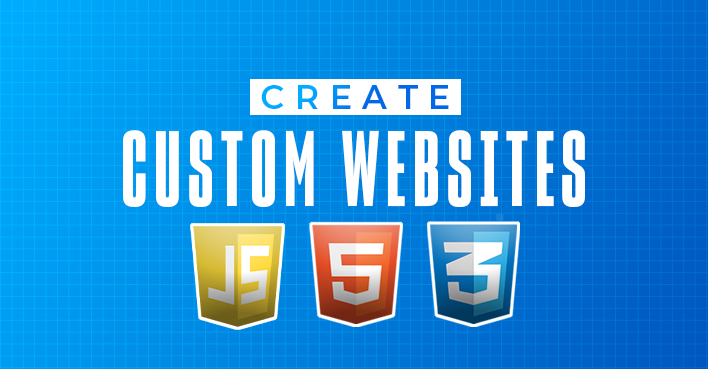Programming languages provide unmatched performance and versatility for custom website creation, enabling companies to build distinctive, scalable, and well-optimized websites. Custom development, in contrast to Content Management Systems (CMS), gives developers the ability to customize every element of the website to meet individual needs. Here’s how to create amazing websites by utilizing the power of bespoke website development.
Advantages of Developing Custom Websites
Total Command and Adaptability
You have complete control over every aspect of your website with custom development. This implies that you can put in place exclusive features, personalized processes, and targeted design components that are exactly in line with your objectives and brand.
Improved Efficiency
Custom development makes it simpler to optimize performance. You can ensure that your website loads quickly and functions properly by writing clear, effective code and removing superfluous bloat.
The ability to scale
It is possible to build custom websites that grow with your company. Custom development enables easy scalability for any kind of growth—whether it’s adding new features, growing your clientele, or adding more services.
Security
Security Websites that are specially designed might incorporate strong security features that are adapted to your unique requirements. As a result, there is less chance of vulnerabilities, which are common in CMS platforms that are generic.
Distinctive Style and Capabilities
Your website may stand out from the competition with a distinctive appearance and feel thanks to bespoke creation. It is possible to create custom functionality to improve user experience and satisfy particular business needs.
Key Programming Languages for Custom Website Development
HTML/CSS
The foundation of any web page is HTML (HyperText Markup Language), which organizes the material.
Cascading Style Sheets, or CSS, are used to style HTML elements so that the final product is a responsive and aesthetically pleasing design.
JavaScript
A flexible language for building dynamic and interactive web elements is JavaScript. With features like form validations, animations, and real-time changes, it improves user experience.
PHP
Server-side programming languages like PHP are what power a lot of dynamic and interactive web pages. It works well with databases and is frequently used in back-end development.
Python
Python is a popular choice for web development because of its readability and simplicity. Django and Flask are examples of frameworks that make it easier to create scalable and reliable web apps.
Ruby
Ruby is renowned for its clean syntax and quick development, and it is frequently used with the Ruby on Rails framework. It’s especially well-liked by newly established and expanding companies.
Java
Java is an object-oriented programming language that is widely used for developing complex web applications. It provides scalability, security, and excellent performance.
C#
Microsoft’s C# language is frequently utilized in conjunction with the ASP.NET framework. Developing dynamic online applications and services is highly recommended, especially in a Windows context.
Techniques for Creating a Unique Website
Arrangement and Conditions Getting Together
- Establish Objectives: Recognize the main goals that your website aims to achieve.
- Determine Your Target Market: Adapt the website to your audience’s demands.
- Enumerate attributes: Ascertain the characteristics and functions that are essential.
Creating the Website’s Design
Wireframing: Sketch out the design and organization of the website.
UI/UX Design: Create an interface that is both aesthetically pleasing and easy to use.
Developing the Website
Front-end development: Create the client side of the website using HTML, CSS, and JavaScript.
Back-end development: Use Python, Java, or PHP to implement server-side logic.
Database Integration: To store and retrieve data, link the website to a database.
Testing
Functionality testing: Verify that every feature functions as planned.
Performance testing: Examine how quickly and responsively the page loads.
Security testing: Find and address possible weaknesses.
Implementation and Upkeep
Deploy the Website: Launch the website on a live server to deploy it.
Frequent Updates: Ensure that security updates and new features are applied to the website.
Track Performance: Keep an eye on the website’s performance and make necessary adjustments.
In summary
Programming languages can be used to create custom websites that have the performance, security, and flexibility required for a distinctive and profitable online presence. Through the utilization of programming languages such as HTML, CSS, JavaScript, PHP, Python, Ruby, Java, and C#, you may design a website that is customized to meet your requirements. Total control over functionality and appearance is possible with custom creation, making sure your website stands out in a crowded online market. Custom development is the secret to obtaining the highest level of performance and flexibility, whether you’re building a new website from the ground up or improving an old one.



